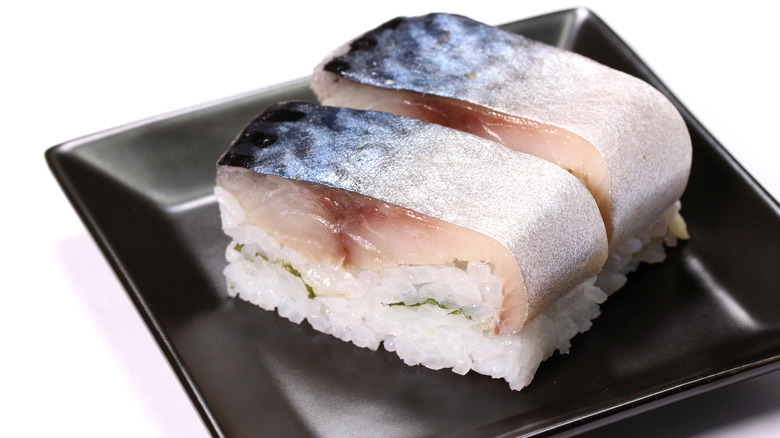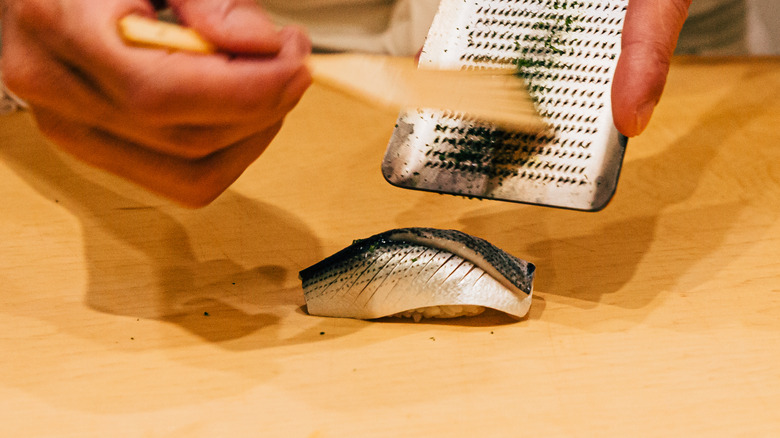Don't Miss Out On Tender, Sustainable Mackerel Sushi
Move aside salmon, tuna, and yellowtail — mackerel is in town. While mackerel sushi may not be as well-known as spicy tuna or shrimp tempura, it should most definitely be a part of your regular sushi order. Japanese-owned sushi restaurants almost always serve this affordable and complex delicacy.
On the menu, it's usually called battera, saba oshizushi, shime saba zushi, or oshizushi. Mackerel is known for its richer and fattier taste, which could scare some beginners away from the fish. However, for those who enjoy smoked salmon, mackerel sushi will give you a similarly briny flavor that accentuates the natural smokiness of the fish.
Another thing that makes mackerel sushi so enticing is that the fish used, such as Atka or Blue Mackerel, is highly sustainable (via Seafood Watch). These species of mackerel are cheap because they are available in abundance and often used as bait for other fish. What separates mackerel sushi from the rest is that the fish is cured to be more tangy, salty, and firm. The mackerel curing process is an age-old practice that precedes the invention of modern sushi as we know it. The salty, fishy flavor of the mackerel is paired with a bright pickled ginger, and it tops a hefty amount of classic sushi rice.
Mackerel sushi takes on an intricate process that results in bold flavor
While other forms of nigiri are quite easy to make at home, making your own mackerel sushi is a much more delicate and complicated endeavor. Since mackerel is much cheaper and more perishable than other fish, you have to buy the freshest one from the store and cure it immediately or right after it's been thawed from frozen. Sushi chefs prepare mackerel in advance by curing it in salt and then marinating it in rice wine vinegar and slicing it very thin so that the skin is a majority of the filet. The Japanese call this process "shimeru" which means to "firm up" the mackerel, making it easier to slice thinly for sushi.
While this cured version of mackerel is available at select Japanese stores, there are other ingredients and tools that go into making your own saba zushi. Mackerel sushi is almost always served as an oshizushi or battera, which is pressed sushi that has been formed in a wooden box. In fact, it is the most popular fish to use in battera, so many will understand that you're ordering mackerel by that name. To make this dish at home, you would need pickled ginger and an oshibako (wooden sushi mold) for the battera on hand.

